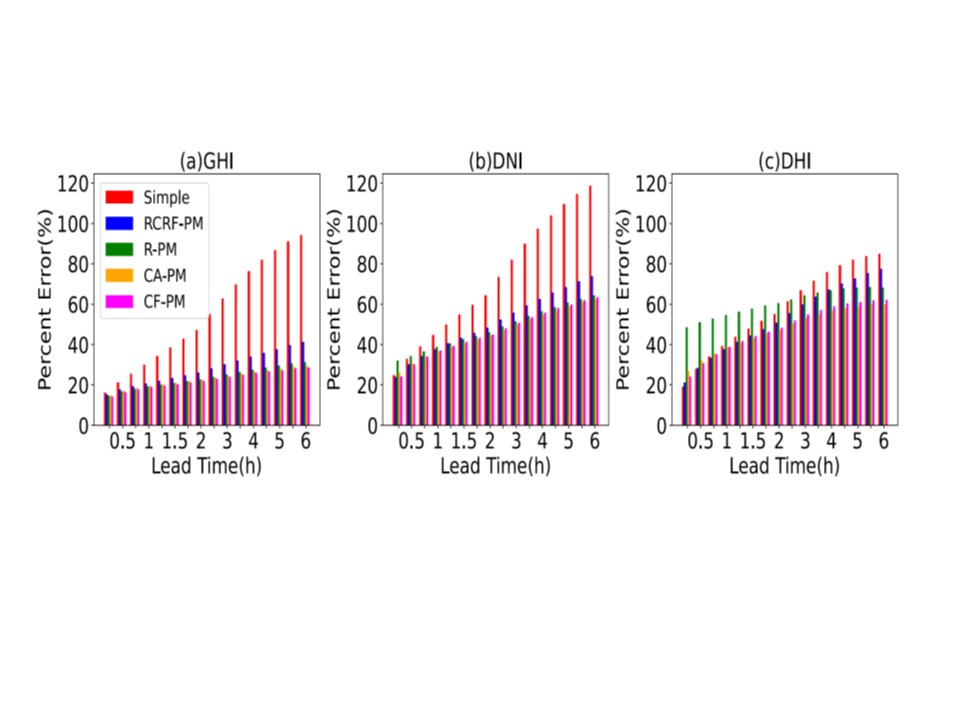Use of long-term ARM radiative measurements for forecasting solar irradiance
Submitter
Liu, Yangang — Brookhaven National Laboratory
Area of Research
Radiation Processes
Journal Reference
Liu W, Y Liu, X Zhou, Y Xie, Y Han, S Yoo, and M Sengupta. 2021. "Use of physics to improve solar forecast: Physics-informed persistence models for simultaneously forecasting GHI, DNI, and DHI." Solar Energy, 215, 10.1016/j.solener.2020.12.045.
Science

Figure 1. This figure compares the percent errors of different models for forecasting Global Horizontal Irradiance (GHI), Direct Normal Irradiance (DNI), and Diffuse Horizontal Irradiance (DHI) at different lead times. Please see the paper for the model detail. From journal.
Long-term radiative measurements collected at the U.S. Department of Energy's Atmospheric Radiation Measurement (ARM) user facility Southern Great Plains (SGP) observatory are used to develop physics-infomed persistence models for forecasting global horizontal irradiance, direct normal irradiance, and diffuse horizontal irradiance.
Impact
This study demonstrates the potential of incorporating physical relationships underlying cloud-radiation interactions into data-driven models to improve solar irradiance forecast.
Summary
Observation-based statistical models have been widely used in forecasting solar energy; however, existing models often lack a clear relation to physics and are limited largely to global horizontal irradiance (GHI) forecasts over
relatively short time horizons (<1 h). Incorporating physics into observation-based models, increasing forecast time horizons, and developing a model system for forecasting not only GHI but also direct normal irradiance
(DNI) and diffuse horizontal irradiance (DHI) remain challenging, especially under cloudy conditions because of complex cloud-radiation interactions. This work attempts to address these challenges by developing a hierarchy
of four new physics-informed persistence models that can be used to simultaneously forecast GHI, DNI, and DHI. The decade-long measurements (1998 to 2014) at ARM’s SGP Central Facility are used to evaluate the performance of the new models. The results show that the new physics-informed forecast models generally outperform the simple and smart persistence models, and improve the forecast accuracy at lead times from 1.25 h up to 6 h. Further analysis reveals that the forecast error is highly related to the error and temporal variability of the assumed cloud predictor. The best model for forecasting different radiative components can be explained by the
relationship between solar irradiances and cloud properties.
Keep up with the Atmospheric Observer
Updates on ARM news, events, and opportunities delivered to your inbox
ARM User Profile
ARM welcomes users from all institutions and nations. A free ARM user account is needed to access ARM data.


















